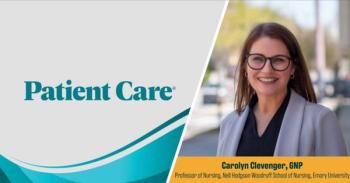
As Many as 1 in 3 High-risk Patients with Atrial Fibrillation are Not Prescribed Anticoagulation
The low rate of stroke prevention with oral anticoagulation in patients with atrial fibrillation is cause for significant concern, say investigators.
One in 3 high-risk patients with
The study published online November 15, 2022, in the Journal of the American Heart Assocation, also found that despite an early rise in use of
Conducted by researchers at the University of Texas Southwestern Medical Center, Duke Clinical Research Institute, and the University of Texas, the analysis was designed to assess changes in the use of the DOACs, sequentially approved by the US Food and Drug Administration between 2010 and 2015.
Given the safety and other advantages of the direct thrombin inhibitor dabigatran and factor Xa inhibitors
Given the safety and other advantages of the direct thrombin inhibitor dabigatran and factor Xa inhibitors apixaban, rivaroxaban, and edoxaban over the traditional OAC gold standard warfarin, “the availability of DOACS had the potential to increase overall rates of anticoagulation in people with AF.”
The research team set out to assess anticoagulation prescribing patterns in patients with AF looking specifically at trends in DOAC uptake, variation in DOAC use by age, sex, or race/ethnicity, and whether DOAC use varied by health system.
Investigators tapped Cerner Real World Data, a platform containing deidentified patient data from health systems using Cerner’s electronic health record platform, to form a cohort of adults aged ≥40 years with ≥2 AF diagnoses at least 1 month apart between January 1, 2011, and December 31, 2020. Potential participants were excluded if they had a CHA2DS2‐VASc score <2, a mechanical valve, or were missing longitudinal follow‐up data.
The final cohort for analyses numbered 436 864 participants from 88 health systems across the US. Median age was 78.3 years and 52.1% were men. With regard to race and ethnicity, 87.7% were White, 6.2% were Black, and 6.1% identified as other or unknown.
Of the overall cohort, 76.0% (n=331 842) had at least 1 encounter after 2019. Among them, 17.0% (n=56 512) were on warfarin, 46.8% (n=155 371) were on a DOAC, and 36.1% (n=119 959) were on no anticoagulation. Compared to those on warfarin, those prescribed a DOAC were younger (median age 77.1 vs 79.2 years), more likely to be women (48.0% vs 44.8%), and less likely to be White (87.4% vs 89.6%).
The researchers found that use of DOACs increased steadily over the study period, from 4.7% in 2011 to 47.9% in 2020 while use of warfarin declined from 52.4% to 17.7%. They suggest that these opposing trends are responsible for the only modest increase overall in rates of anticoagulation from 56.3% to 64.7% from 2011 to 2020.
The researchers found that use of DOACs increased steadily over the study period while use of warfarin declined. They suggest that these opposing trends are responsible for the only modest increase overall in rates of anticoagulation from from 2011 to 2020.
The trends in uptake of DOACs were similar across age, race, sex, and ethnicity, according to the study findings, suggesting that individual patient characteristics are not likely driving use of the drugs. Investigators did find significant variability, however, in DOAC prescribing between health systems. In 2020, the median health‐system‐level proportion of patients with AF on a DOAC was 49%. Among the hospitals in the highest quartile of DOAC use more than 54% were on a DOAC while fewer than 33% those in the lowest quartile were on a DOAC in 2020.
While DOACs are now much more commonly used than warfarin in patients with AF at risk for stroke, DOAC use did not overtake warfarin use for more than half a decade after the first DOAC reached the market. At a population level, patient‐level differences did not appear to drive differences in DOAC use,” concluded investigators. “Substantial variability in the proportion of patients receiving a DOAC between health systems and lack of large patient‐level differences in those receiving warfarin versus DOACs suggests that provider and health‐system‐level factors are responsible for the majority of ongoing warfarin use.”
Moreover, the authors write, the totality of the findings suggest that the availability of more convenient, lower‐bleeding‐risk therapies such as DOACs as an alternative to warfarin has been insufficient to fully close the gap in stroke prevention in AF.
Reference: Navar AM, Kolkailah AA, Overton R, et al. T
Newsletter
Enhance your clinical practice with the Patient Care newsletter, offering the latest evidence-based guidelines, diagnostic insights, and treatment strategies for primary care physicians.

















































































































































































































































































